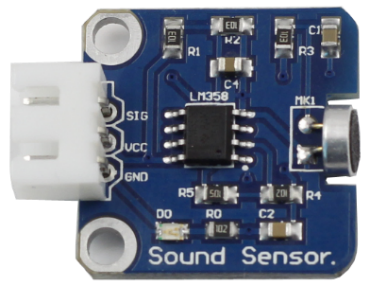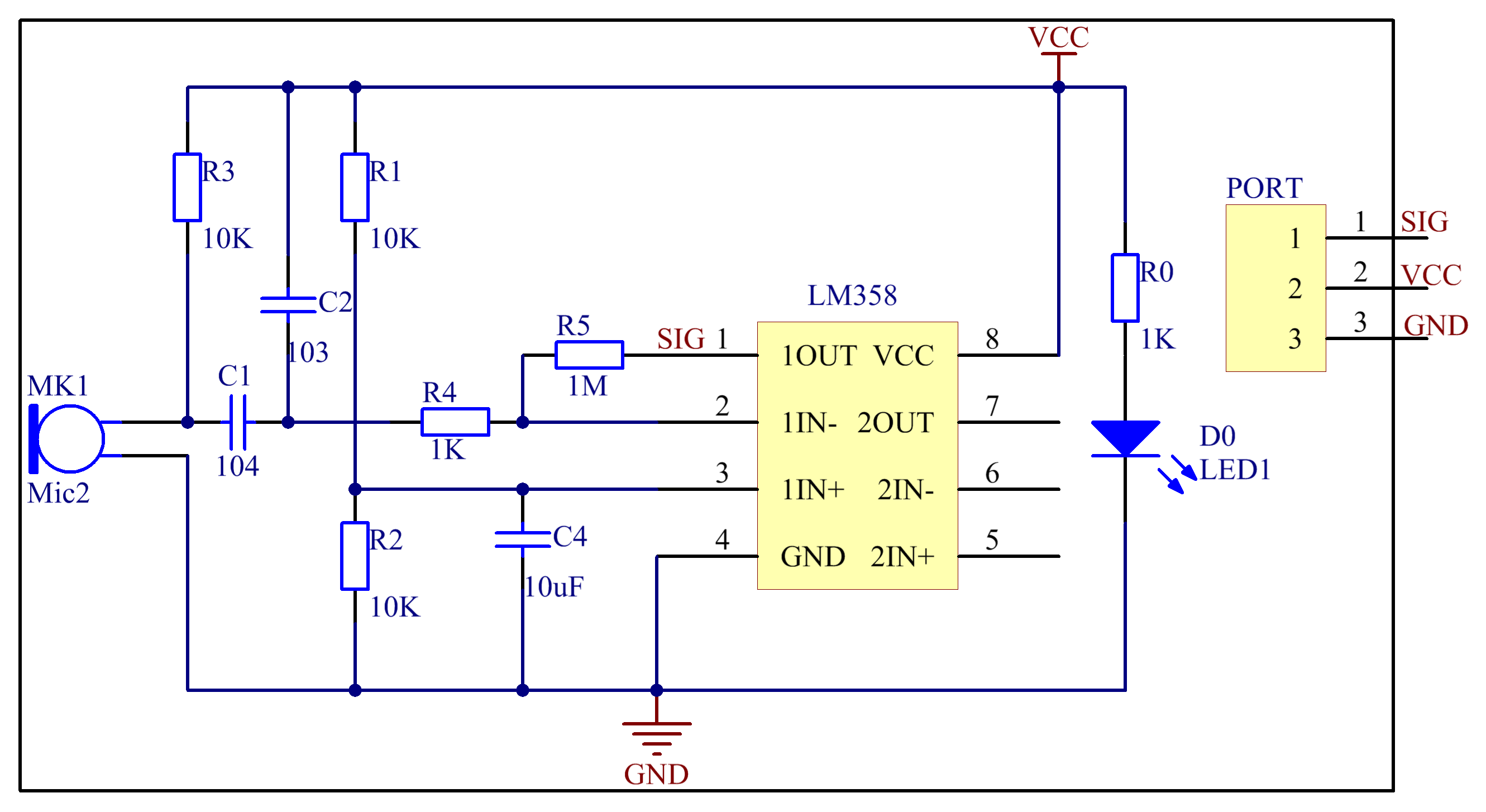Introduction
Sound sensor is a component that receives sound waves and converts them into electrical signal. It detects the sound intensity in ambient environment like a microphone.

Components
– 1 * Raspberry Pi
– 1 * Breadboard
– 1 * PCF8591
– 1 * Network cable (or USB wireless network adapter)
– 1 * Sound sensor module
– 1 * 3-Pin anti-reverse cable
– Several Jumper wires (M to F)
Experimental Principle
The microphone on the sensor module can convert audio signals into electrical signals (analog quantity), then convert analog quantity into digital quantity by PCF8591 and transfer them to MCU.
LM358 is a dual-channel operational amplifier. It contains two independent, high gain, and internally compensated amplifiers, but we will only use one of them in this experiment. The microphone transforms sound signals into electrical signals and then sends out the signals to pin 2 of LM358 and outputs them to pin 1 (that’s, pin SIG of the module) via the external circuit. Then use PCF8591 to read analog values.
PCF8591 is an 8-bit resolution, 4-channel A/D,1-channel D/A conversion chip. We connect the output terminal (SIG) to AIN0 of PCF8591 so as to detect the strength of voice signal in a real-time manner.
The schematic diagram:

Experimental Procedures
Step 1: Build the circuit
| Raspberry Pi | PCF8591 Module | Sound Sensor Module |
| SDA | SDA | |
| SCL | SCL | |
| 3V3 | VCC | VCC |
| GND | GND | GND |
| * | AIN0 | SIG |

For C language users:
Step 2: Change directory
cd /home/pi/SunFounder_SensorKit_for_RPi2/C/19_sound_sensor/
Step 3: Compile
gcc sound_sensor.c –lwiringPicd
Step 4: Run
sudo ./a.out
For Python users:
Step 2: Change directory
cd /home/pi/SunFounder_SensorKit_for_RPi2/Python/
Step 3: Run
sudo python 19_sound_sensor.py
Now, say something or blow to the microphone, and you can see “Voice In!! ***” printed on the screen.

C Code
#include <stdio.h>
#include <wiringPi.h>
#include <pcf8591.h>
#define PCF 120
int main (void)
{
int value;
int count = 0;
wiringPiSetup ();
// Setup pcf8591 on base pin 120, and address 0x48
pcf8591Setup (PCF, 0x48);
while(1) // loop forever
{
value = analogRead (PCF + 0);
//printf("%d\n", value);
if (value <50){
count++;
printf("Voice In!! %d\n", count);
}
}
return 0;
}
Python Code
#!/usr/bin/env python
import PCF8591 as ADC
import RPi.GPIO as GPIO
import time
GPIO.setmode(GPIO.BCM)
def setup():
ADC.setup(0x48)
def loop():
count = 0
while True:
voiceValue = ADC.read(0)
if voiceValue:
print 'Value:', voiceValue
if voiceValue < 50:
print "Voice detected! ", count
count += 1
time.sleep(0.2)
if __name__ == '__main__':
try:
setup()
loop()
except KeyboardInterrupt:
pass
